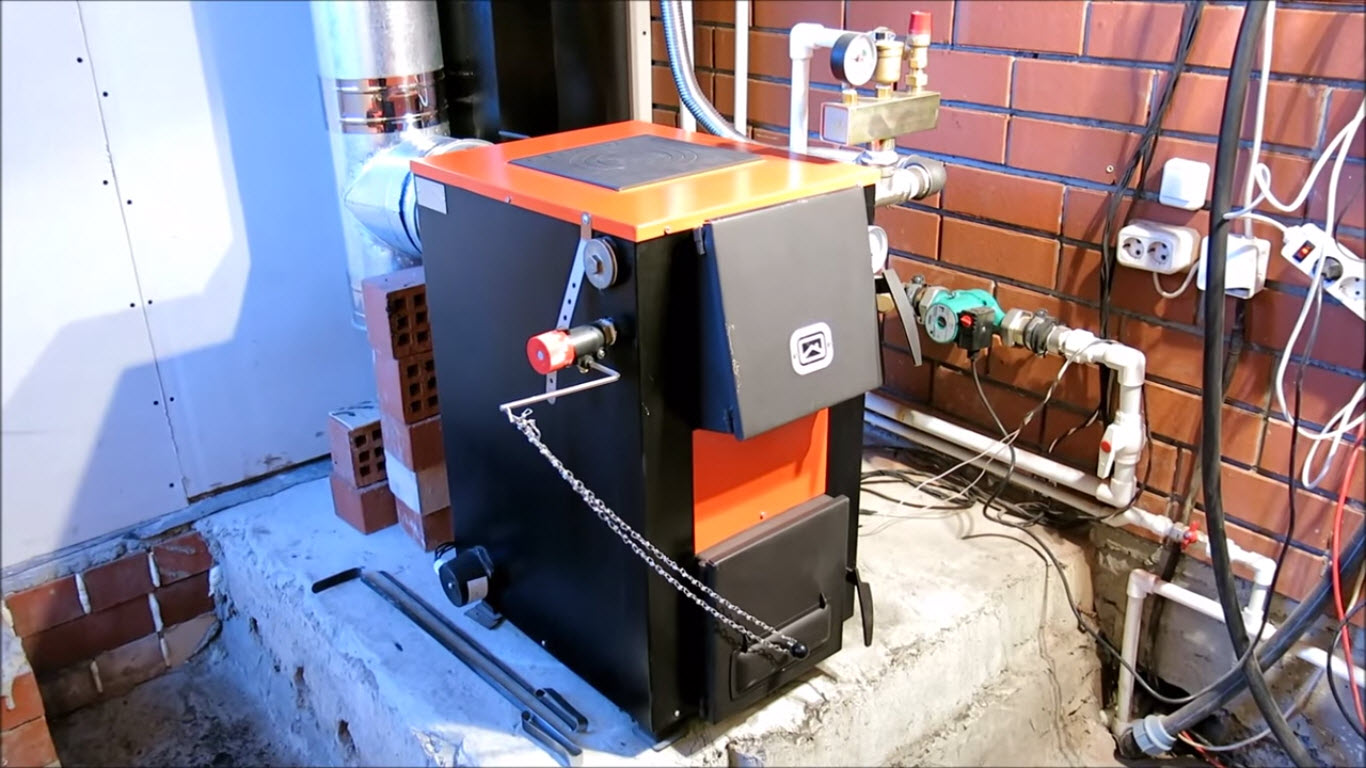Installation of solid fuel boiler (floor type)
These boilers use wood, brown or black coal, peat, pellets, etc. as fuel. Most solid fuel boilers on the market are designed to work on one type of fuel. Using a different type of fuel leads to a decrease in the efficiency of heating system and a reduction in life of boiler equipment. Cheap solid fuel boilers on market allow to regulate power in a small range (from 100% to 80% of nominal capacity), which causes difficulties in operation operation. For example, at an ambient temperature of + 5°C, to ensure comfort, the boiler should operate at capacity of 15% of rated value, however cheap models of solid fuel boilers can provide power reduction only up to 80%. There is a need for incomplete furnace loading, which leads to difficulties in automating the heating system and maintaining optimum temperature of the coolant. It should be noted that solid fuel boilers require the correct organization of flue to divert the combustion products. Thrust depends on height of chimney.
More modern type of solid fuel boilers are pyrolysis boilers.
Principal difference between solid-fuel pyrolysis and solid-fuel classic boilers is following: combustion phases are separated in pyrolysis boiler: in the first phase, wood is not burned, but gas that is released from wood under influence of high temperature and lack of oxygen, and solid combustion is in second phase. The advantage of pyrolysis boilers is high efficiency for this type of boiler, reaching 85%, virtually no ash and soot.
The advantage of more expensive models of solid fuel boilers, such as pellet and pyrolysis, is ability to adjust power in range of 100%-30% of rated output. However, the cost of pellet and pyrolysis boilers is much higher than cost of the simplest types of solid fuel boilers.
Heating systems cost for installation services
 |
 |
 |
 |
 |
 |
 |
 |
 |
 |
 |
 |



